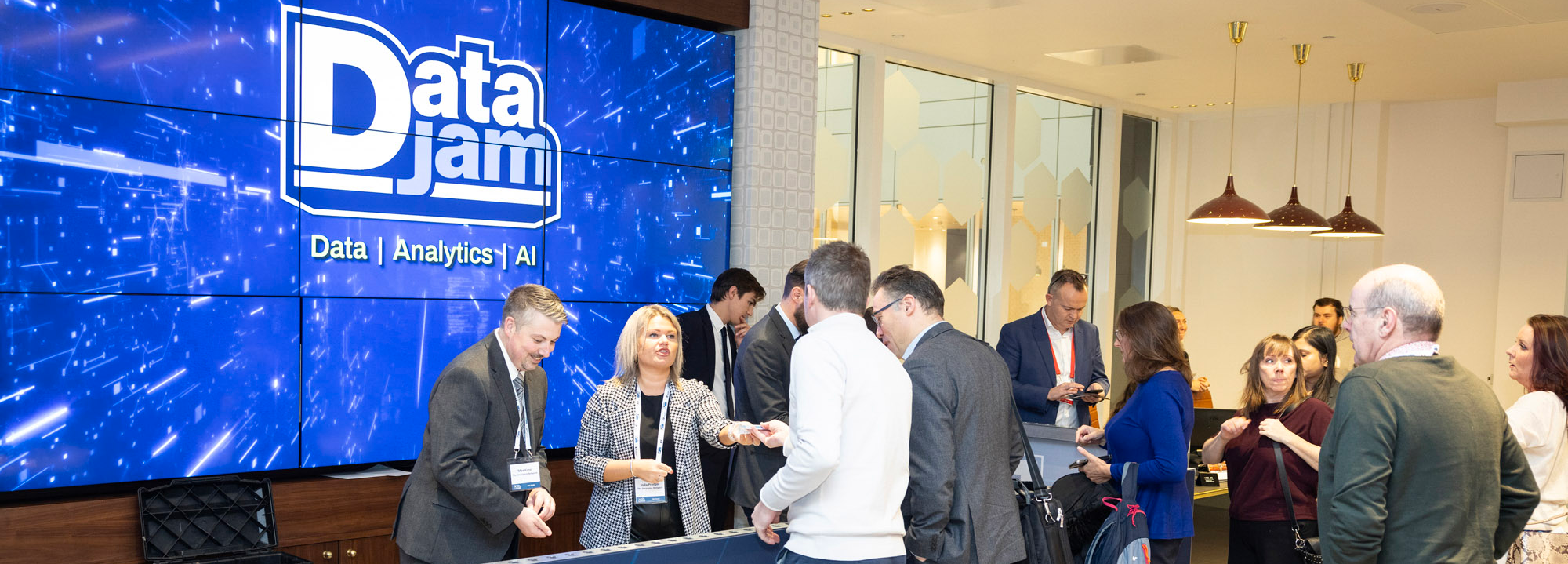Ahead of this year’s Data Jam we held an advisory board meeting focused on how insurance organisations are wrestling with the rapid development of AI enabled tools and the challenges of building data capabilities to drive operational and strategic value.
The participants offered a balanced discussion of practical experiences, cautionary insights and tactical guidance for anyone looking to transition from disconnected data assets to tangible value creation.
Rethinking operations through AI
The session began with discussions about how transformation requires more than just isolated experiments. It demands a new operating model, where technology runs data-driven processes under human oversight. People guide systems, set parameters and intervene where needed, but the engine of operations increasingly lies in intelligent automation. AI should not simply speed up existing tasks but reshape what work is done.
Operations were framed around three levers: effort, speed and leverage. Effort is the human energy and cost invested in service delivery. Speed reflects the pace of execution. Leverage captures the ability to extend decision-making beyond individual limits. AI must move all three levers in tandem. Selecting purposeful use cases, rather than scattering pilots, is key to delivering measurable results and building confidence.

Moving from pilots to scale
It was noted that the first step is a visible, measurable concept linked directly to strategy. Without this anchor, activity risks staying fragmented. A flagship initiative should show improvements in effort, speed and leverage so that senior leaders see tangible benefits. Once achieved, organisations can replicate proven use cases, build delivery capability and move towards a tipping point where AI becomes the default operating model.
“The real breakthrough comes when small experiments evolve into orchestrated systems that redefine how operations run.”
Case studies during the session illustrated this journey. Early efforts involved predictive models for claims and automation trained on staff activity. More recently, focus has shifted to agent-based models where small, specialised agents are organised into teams. Each is given a clear purpose and minimal instructions, with layers of doers, validators and checkers ensuring accuracy. This structure raised performance, reduced code complexity and lessened reliance on large datasets by working directly with live inputs.
Combining human and machine capabilities
A recurring theme during the session was that AI should enhance human capability, not replace it. In customer-facing functions, internal copilots now help staff answer routine questions, provide personalised guidance and generate structured medical summaries. These tools reduce stress, increase confidence and speed up resolution, creating a more resilient workforce with access to the right information at the right time.
On underwriting, the tension between data-driven recommendations and human intuition was acknowledged and discussed. Machines can analyse patterns across entire portfolios in real time, while underwriters bring contextual knowledge and pricing nuance. The role of people is redefined: they remain accountable for exceptions and deliberate deviations while learning from the outcomes of their choices against machine-generated insights.
Building the data ecosystem
It was noted that progress depends on a robust data strategy and compatible application architecture. Without accurate, accessible and contextual data, AI initiatives stall and fail to scale. Standardising platforms, aligning applications and ensuring data readiness are prerequisites for consistent deployment. Fragmentation must give way to a coordinated ecosystem that delivers the right information in real time to both humans and machines.
Modernisation was highlighted as critical for attracting the future workforce. The next generation will expect intelligent tools as a baseline. Organisations tied to outdated systems will struggle to recruit talent and limit their ability to adapt. The immediate priority is to select use cases that move the three operational levers, demonstrate visible value and secure executive confidence, while investing in the ecosystem that enables sustained progress.

Conclusions and key takeaways
The participants made clear that success with AI in operations is not about chasing isolated pilots. It is about proving improvements in effort, speed and leverage, backed by visible concepts that win trust. From there, organisations should replicate patterns, scale agent-based approaches and commit to modernisation.
Three takeaways stood out:
- First: AI must reshape work, not just accelerate existing tasks.
- Second: human capability remains central, with machines providing context and people applying judgment.
- Third: robust data and architecture are non-negotiable foundations for scale.
With these elements in place, organisations can move beyond experimentation and embed intelligent, data-led operations that deliver lasting value.
Sign Up to TINsights
Where we share our latest blogs, industry reports and insights


